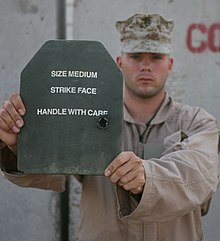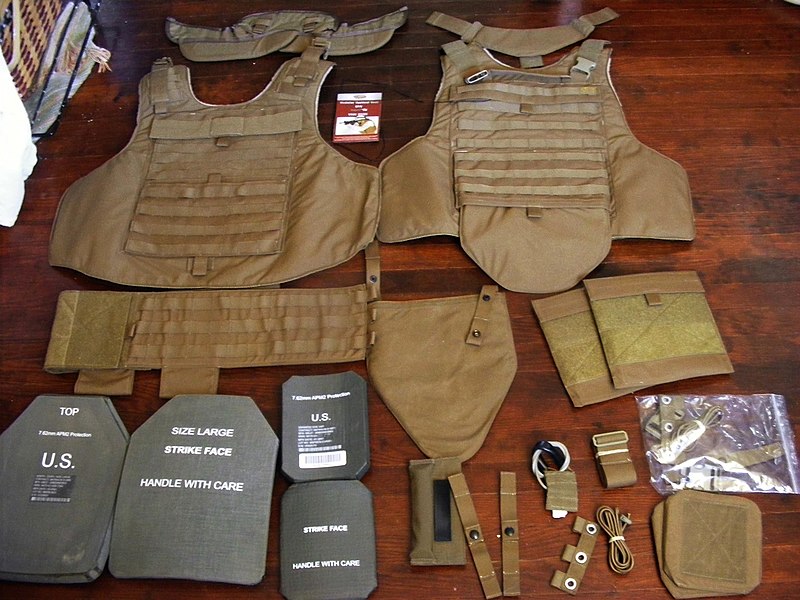A rifle for fighting, not for fun: India must give more thought to the foot soldier and his weapon
Posted: Fri Jun 30, 2017 6:19 pm
Of course the reason why we are able to send a mission to Mars but can't make a decent battle rifle is... successive governments have ensured that the private small arms industry (in India) is all but non-existent. Even now with all the noise about #MakeInIndia and the government handing out manufacturing licenses to private players, they are missing the most important point. Once government orders are completed, who will these factories sell/ supply to? In most free countries, this slack is taken up by manufacture for the civilian trade. Will they ever see the light and allow this ecosystem to develop here?
Cheers!
Abhijeet
Source: https://scroll.in/article/842063/a-rifl ... his-weapon
Cheers!
Abhijeet
Source: https://scroll.in/article/842063/a-rifl ... his-weapon
A rifle for fighting, not for fun: India must give more thought to the foot soldier and his weapon
It has already been six years since the army decided to phase out the INSAS rifle and started the search for a leaner, meaner machine.
29 June 2017 05:30 pm
Mohan Guruswamy
There are reports that say Indian infantrymen in combat zones prefer to fight with AK-47 rifles, just like US infantrymen in the Vietnam war preferred it to the M-14 rifle.
Field Marshal Archibald Wavell, who was a distinguished infantryman with the British Army before he became a somewhat less distinguished viceroy of India, wrote, “Let us be clear about three facts: first, all battles and all wars are won, in the end, by the infantryman. Secondly, the infantryman always bears the brunt; his casualties are heavier, he suffers greater extremes of discomfort and fatigue than the other combat arms. Thirdly, the art of the infantryman is less stereotyped, and far harder to acquire in modern war, than that of any other arm.”
The United States Marine Corps’ Rifleman’s Creed teaches:
“My rifle is my best friend. It is my life. I must master it as I must master my life. Without me, my rifle is useless. Without my rifle, I am useless. I must fire my rifle true. I must shoot straighter than my enemy who is trying to kill me. I must shoot him before he shoots me.”
Down to the basics, soldiering is about killing. An army that does it best wins.
In the 1953 best-seller Battle Cry by Leon Uris, a Marine recruit is punished for the transgression of calling a rifle a gun by being asked to do rounds of the drilling ground, naked and chanting, “This is my rifle, this is my gun. This is for fighting, this is for fun!”
In military parlance, a gun can be anything that fires a projectile. A howitzer (which fires shells at high trajectories) is a gun, as is a cannon. The rifle is a specific weapon used by a soldier. It is a gun fired from shoulder level with a long spirally grooved barrel intended to make a bullet spin and thereby have greater accuracy over a long distance. It is what a soldier mostly uses to do his work. Stalin famously said: “The only real power comes out of a long rifle.” The American general Douglas MacArthur typically put it into context when he said, “Whoever said the pen is mightier than the sword obviously never encountered automatic weapons.”
Small is better?
Their development owes to a well-known post-World War II study of the pattern of usage of weapons by US infantrymen in combat, by the military analyst Brigadier SLA Marshall. The study revealed that most infantrymen used their weapons very little, preferring to take cover and firing occasionally. It also found that the infantrymen most likely to fire their weapons were those closest to a soldier firing a Browning Automatic Rifle. This was because when the BAR man fired, he was able to literally hose down a wide arc in front of him. When he did this, the opposing soldiers lay low and the infantrymen by his side could rise from behind cover and fire their weapons. This clearly suggested a need for greater deployment of automatic weapons.
The reader may wonder, why a smaller calibre weapon, when it seems that for most things in life bigger is better? This change in thinking, as far as rifles are concerned, was the result of three observations. First, a large calibre (bullet diameter) round, 7.65 mm or .30 calibre, needed a large explosive charge to propel it at the desired speed of up to 800 meters per second. The recoil, as a result of this explosive charge in the automatic fire mode, often made the weapon virtually uncontrollable. Not only was the soldier unable to aim properly, the recoil often caused injuries.
The other observation was that what was needed was not a marksman’s weapon firing accurately up to 800 meters. Statistical analysis by the US Army of rifle engagements in World War II and the Korean and Vietnam Wars revealed that 90% of them were at ranges less than 300 meters and 70% at 200 meters and less. Therefore, the emphasis on long-range accuracy of 300 meters to 800 meters was found somewhat redundant.
What followed from the increasing dependence on automatic weapons was that greater quantities of ammunition were now needed. The propensity to consume ammunition reached an astounding rate of 50,000 rounds per kill in the Korean War in the 1950s. This meant that a soldier now had to carry greater quantities of ammunition. The smaller the calibre, the greater the number of bullets a soldier can carry into the battlefield.
The debate is coming full circle now. After 50 years, militaries the world over, especially those that have fought long wars, are actively considering going back to the old 7.62 round. This is mostly because of the development of the soldier’s armour, which can easily stop a 5.56 round. Riflemen want stopping power. The reduced weight of the 5.56 also means reduced lethality. Battlefield experience also tells that while the 5.56 round does more damage, it kills less. It leaves behind wounded soldiers still capable of combat. American soldiers in Iraq and Afghanistan have discovered at great cost that a wounded but determined soldier can exact as much damage as an able-bodied one.
In India, a 6-year wait
The INSAS or Indian New Small Arms System rifle drew heavily from other designs but never really performed like any of them. During the Kargil conflict in 1999 – when the Indian Army engaged the Pakistan military after it took positions on the Indian side of the Line of Control – many damaged weapons returned to the factory and fresh lots had to be sent out. There were complaints of jamming, magazines (cartridge holders) cracking due to the cold, and rifles going into automatic mode when they were set for three-round bursts. There was also a problem of oil being sprayed into the eye of the operator. Some injuries during firing practice were also reported.
The Nepalese Army had similar complaints. In August 2005, after 43 soldiers were killed in a clash with Maoists, a Nepalese Army spokesman called the rifles they used substandard and said the counter-insurgency operation would have been more efficient with better weapons.
Even now we hear of Indian infantrymen in combat zones preferring to fight with AK-47 rifles, just like US infantrymen in Vietnam preferred it to the M-14 rifle, which was said to be more likely to jam.
Recognising this, the Indian Army has now decided to phase out the INSAS. In 2011, it issued tenders for a new quartet of infantry weapons. Whatever its choice, the army must get on quickly with its final evaluations and take a decision soon. Considering the time taken – six years – clearly a sense of urgency needs to prevail.
Last week, the Indian Army rejected an indigenously built assault rifle, citing poor quality and ineffective firepower, and is likely to take a fresh call soon on procuring similar weapons to replace the INSAS rifles. The army rejected the 7.62x51 mm guns built by the Rifle Factory Ishapore after they failed the firing tests. It was reported that the rifles had an “excessive number of faults”. The army had earlier rejected another indigenously built assault rifle, the 5.56 mm Excalibur, as it did not meet the required standards.
Given the pattern of our recent defence spends, it seems our strategists have reverted to the old habit of spending all on the big and extravagant and least likely to be used than on arms for the foot soldier who, in the ultimate analysis, even today, still wins or loses battles for his country. Thus, while debates have raged and money has obviously been made on the purchase of the Russian-made Sukhoi SU-30 jets, the Rafale jets from France, the 155 mm self-propelled guns and Main Battle Tanks, nuclear submarines and aircraft carriers, little thought has been given to the foot soldier and his weapon. This is the weapon that is used for fighting and not for fun on Republic Day at Rajpath.


